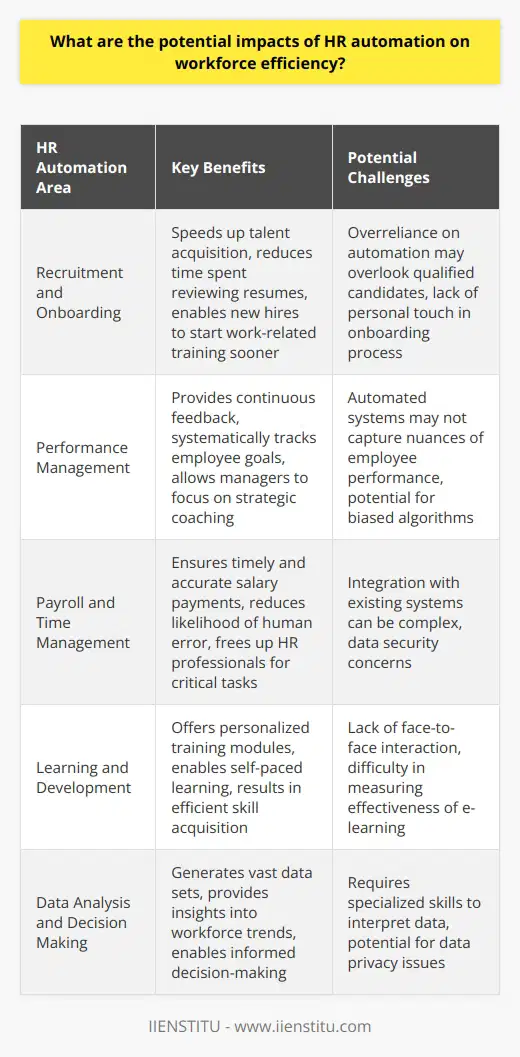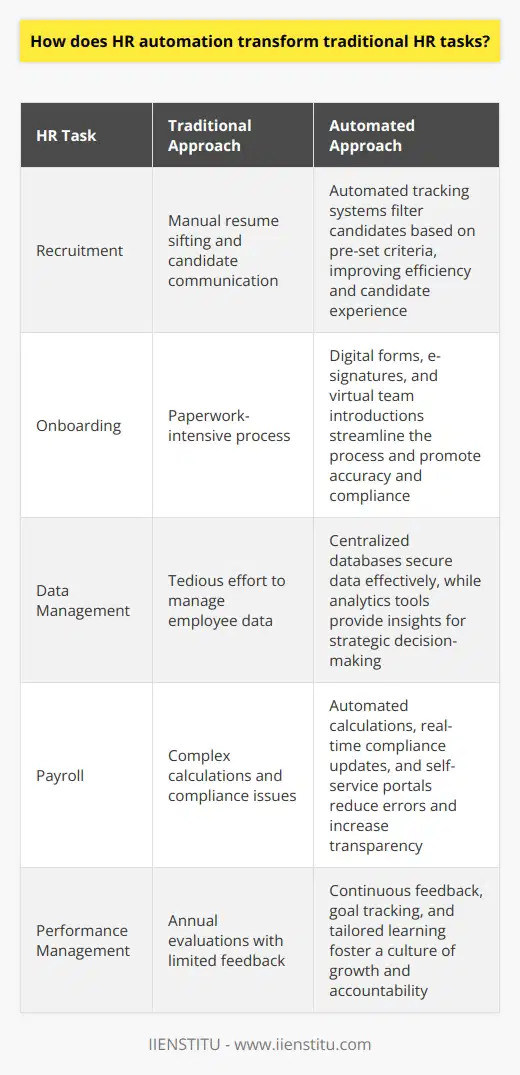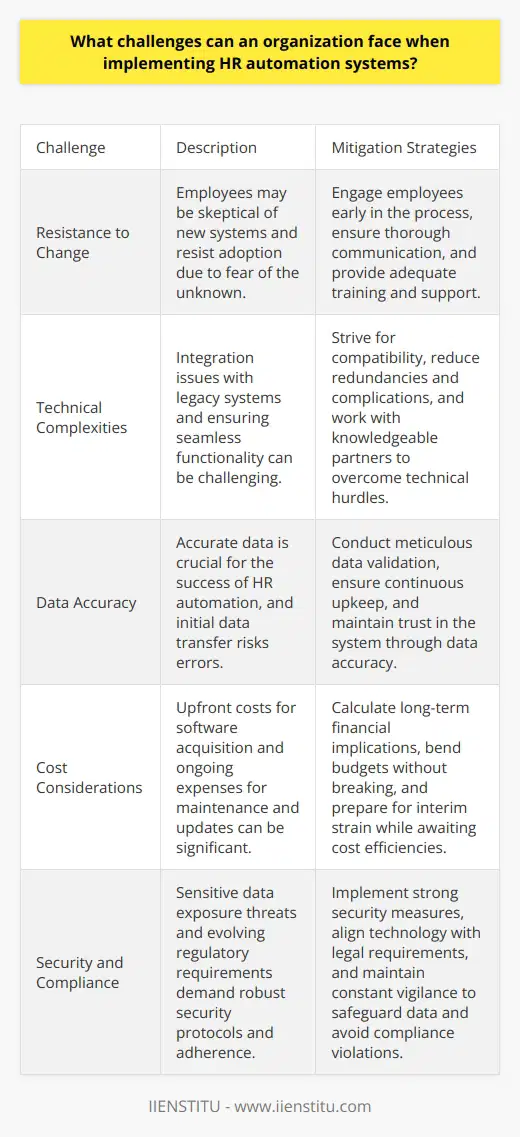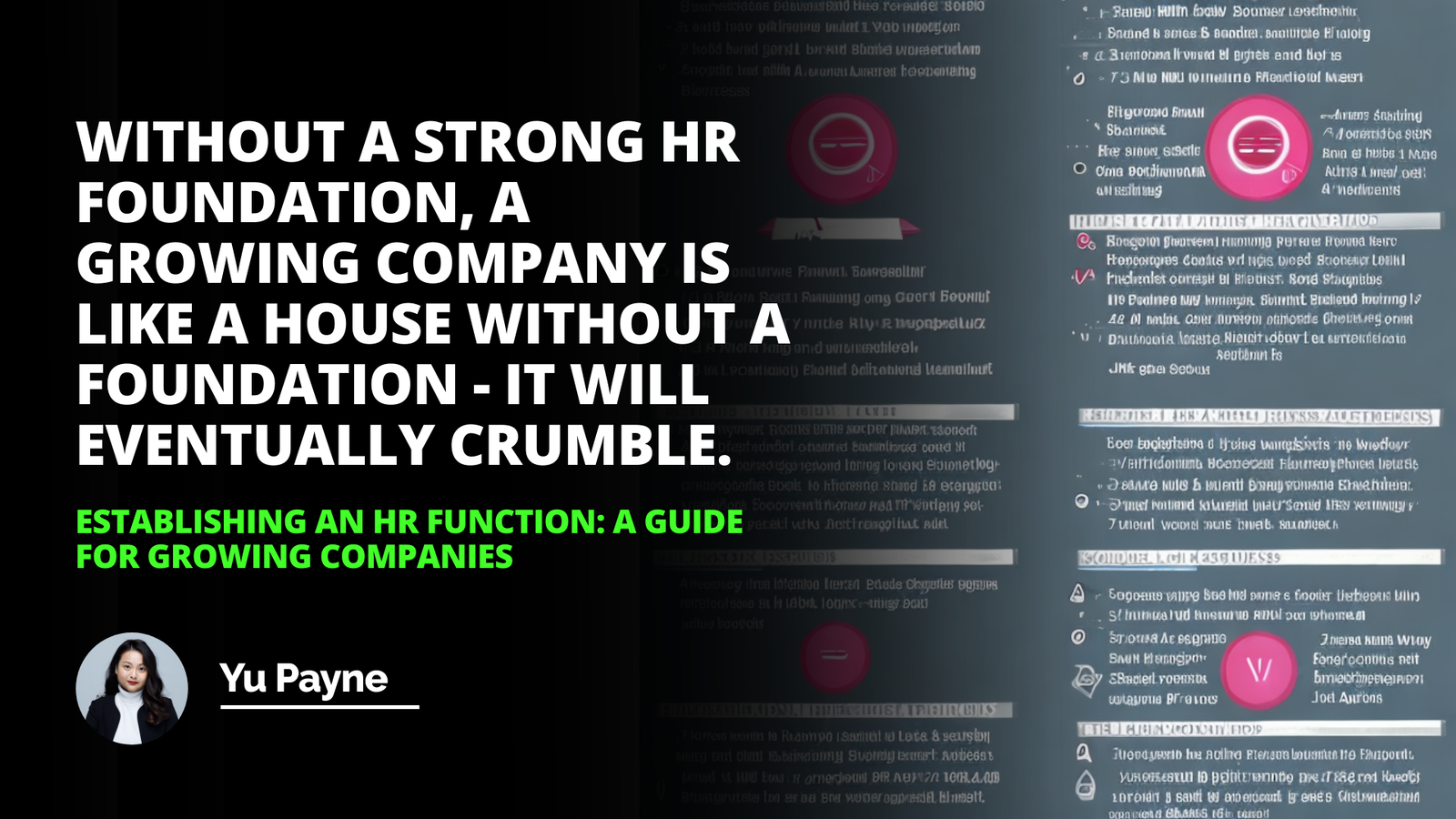
In an evolving business landscape where efficiency and strategic resource management are paramount, HR automation stands as a beacon of transformative potential. By integrating advanced technology into human resources, organizations are experiencing a monumental shift from traditional, labor-intensive processes to streamlined, automated solutions. Reflecting on the expertise of thought leaders like Ravin Jesuthasan, this examination seeks to probe the multifaceted realm of HR automation, delineating its impact, constituents, and future trajectory.
Introduction to HR Automation
Definition of HR automation
HR automation refers to the implementation of software technologies to automate and optimize human resources tasks and processes. By doing so, mundane and repetitive tasks are minimized, freeing HR professionals to focus on more strategic initiatives. Automation is not merely about transferring existing processes into a digital format, but about rethinking and refining these processes for maximum efficiency and effectiveness.
Overview of the concept of HR automation
The concept of HR automation encompasses a broad range of activities, from basic data entry and record-keeping to sophisticated analytics and decision-making support. Cybernetic advancements are increasingly enabling automation to cover complex areas such as employee engagement, performance, and predictive analytics.
By embracing HR automation, companies are not only enhancing the productivity of their HR departments but also fostering a better work environment for their entire workforce.
The significance of HR automation in the modern business world
In today's agile market, the ability to adapt quickly and efficiently is vital, and HR automation plays a crucial role in achieving this agility. Automation provides real-time data and insights that help management make informed decisions swiftly.
Moreover, with a global shift towards remote work and digitalization, HR automation has become indispensable in managing decentralized workforces effectively.
The Role of HR Automation in Businesses
The role of HR automation in streamlining HR processes
Automation effectively eliminates the bottlenecks associated with human resources management by digitizing laborious tasks such as attendance tracking, employee leave application, and updating personal data.
Automated workflows ensure that approvals and processes are followed systematically, reducing the chance of errors and ensuring compliance with company policies and regulations.
How HR automation contributes to cost and time efficiency
By automating HR tasks, organizations can significantly reduce the man-hours required to perform routine tasks, leading to substantial cost savings. Additionally, the improved accuracy and reduced redundancy of automated systems contribute to overall organizational efficiency, enabling human resources personnel to devote more time to core activities such as talent development and employee relations.
Example of the impact of HR automation on a business operation
Consider the case of a medium-sized enterprise that implemented an automated time-tracking system. This system not only decreased the time taken to process payroll but also provided analytics on workforce productivity patterns. As a result, the company was able to identify areas of inefficiency and restructure its operations to better utilize its human capital.
Potential benefits of adopting HR automation in an organization
By incorporating HR automation, companies can expect a myriad of advantages, including improved regulatory compliance, enhanced employee satisfaction through prompt and fair HR processes, and a wealth of data that can be used to drive strategic HR initiatives. The embrace of HR automation is not a mere technological upgrade but a fundamental re-engineering of the human resource function that drives business innovation and growth.
The Core Components of HR Automation
Detailed explanation of the components of HR automation
HR automation is a composite of several critical components that facilitate various HR functions. Core elements such as data analytics, employee self-service portals, automated workflows, and integrated HR information systems constitute the central components. Each plays a pivotal role in creating a seamless, efficient HR management system.
Discussion on employee data management
At the heart of HR automation lies the capacity to manage vast amounts of employee data with precision and security. Automated systems are designed to handle personal information, employment histories, and benefits data in a way that is both accessible and compliant with data protection laws.
This allows for accurate record-keeping and timely data retrieval without the risks of manual errors or breaches in confidentiality.
Explanation of automated employee onboarding and offboarding
The automation of onboarding and offboarding provides an organized and consistent experience for new hires and departing employees. Through automated checklists, task assignments, and document management, the cumbersome processes of joining or leaving a company are made smoother for all parties involved.
This automation fosters a positive company image and helps maintain engagement from the onset of employment.
The role of automated payroll and benefits administration
Payroll and benefits administration is an intricate aspect of HR that stands to gain immensely from automation. Automated systems ensure employees are compensated correctly and on time, with all relevant deductions and additions calculated with unerring precision.
Further, by simplifying the administration of benefits, these systems make it easier for companies to offer more comprehensive and tailored options to their workforce.
The importance of automated talent sourcing and recruiting
In a competitive job market, the ability to attract and secure the best talent is crucial. HR automation tools streamline recruitment by filtering applications, scheduling interviews, and tracking candidate progress through the hiring process.
Additionally, AI-powered algorithms can identify the best matches for job vacancies, thus enhancing the quality of new hires.
The Tools Used in HR Automation
Overview of different tools used for HR automation
There is a wide range of tools available to facilitate HR automation, varying from comprehensive platforms that handle multiple HR functions to specialized software that focuses on particular tasks. The selection of tools should align with the organization's needs, size, and HR strategy to reap the maximum benefits of automation.
Comprehensive review on digital HRMS systems
Digital Human Resource Management Systems (HRMS) serve as all-encompassing platforms that integrate several HR functions into one cohesive system. These systems often include features for applicant tracking, employee onboarding, performance management, and more. A well-implemented HRMS can serve as the linchpin of a company's HR automation efforts, providing a singular point of truth for employee data and facilitating streamlined HR workflows.
Highlighting the use of AI and machine learning in HR automation
AI and machine learning are proving to be game-changers in HR automation, especially in their ability to provide predictive analytics and intelligent decision support. For instance, AI can aid in predicting employee turnover, identifying learning and development needs, and even automating complex scheduling tasks. These technologies are continually evolving, offering increasingly sophisticated solutions to HR challenges.
Examples of effective HR tools to consider
When considering HR automation tools, some standouts include SAP SuccessFactors for end-to-end HR processes, Workday for financial and HR needs, and Zoho People for its user-friendly and modular approach. For specific functions like applicant tracking, platforms such as Greenhouse and Lever offer powerful automation capabilities that simplify the recruitment process.
The Challenges and Solutions in HR Automation
Unveiling potential challenges that might occur during HR automation implementation
Implementing HR automation is not without its difficulties. Challenges such as employee resistance to new systems, data migration complexities, and ensuring system security and compliance must be addressed. Successful implementation requires a clear strategy, thorough training, and a willingness to adapt processes to align with automation capabilities.
Possible solutions to tackle the challenges in HR automation
To overcome these obstacles, it is essential to engage stakeholders from the outset, explaining the benefits of automation and involving them in the transition process. Additionally, partnering with reputable vendors that offer robust support and choosing customizable systems that can adapt to the company's evolving needs are strategies that can mitigate these challenges.
Helping the audience understand how to effectively use HR automation to avoid issues
Throughout the implementation process, businesses should maintain open communication channels, provide adequate support and resources for employees to adapt, and continuously monitor system performance to resolve issues proactively. Effectively leveraging HR automation demands a balanced approach that combines technological solutions with an empathetic understanding of the human factors involved.
Future of HR Automation
Discussion about the future trends of HR automation
Future trends in HR automation are expected to further emphasize the role of AI and advanced analytics in decision-making. There will likely be greater integration of HR systems with other business functions, leading to a more holistic view of organizational operations and employee lifecycle management.
How AI and machine learning continue to shape HR automation
The continuous advancements in AI and machine learning herald a new age where elements of cognitive computing could become integral in strategic HR functions. These technologies could drive not just efficiency but also help to predict employee behaviors and tailor HR interventions to individual needs in unprecedented ways.
Prediction of possible developments in HR automation
Considering the evolution of workplace practices, it is plausible to predict that HR automation will become even more intuitive, with virtual assistants and conversational AI facilitating daily HR tasks. Furthermore, the increased adoption of blockchain technology could enhance the security and integrity of HR data.
Encouraging the audience to stay prepared and flexible for future changes in HR automation
By staying informed about technological advancements and remaining adaptable to change, businesses and HR professionals can fully leverage the potential of HR automation. Organizations should cultivate a culture of perpetual learning and innovation to ensure that their HR functions are not only efficient but also resilient against the backdrop of a rapidly changing global work environment.
HR automation is undeniably revolutionizing the field of human resources. By synthesizing the points discussed, we can affirm that automation is key to enhancing efficiency, reducing costs, and providing strategic insight. Consequently, the importance of online courses with certificates in HR and related areas becomes clear, as continuing education prepares professionals for the evolving needs of the workplace. Human resources certification course offerings are more important than ever for those looking to stay at the forefront of this digital transformation.
Through careful adoption and ongoing adaptation, HR automation promises to be a cornerstone in supporting business growth and fostering a dynamic, engaged workforce that is prepared to meet the challenges of tomorrow’s corporate landscape.
Frequently Asked Questions
What are the potential impacts of HR automation on workforce efficiency?
Introduction to HR Automation
Human Resources (HR) automation represents a significant shift. Firms now invest heavily in technological solutions. These solutions aim to streamline HR processes.
The Efficiency Paradigm
HR automation enhances workforce efficiency in various ways. It transforms traditional HR tasks. For instance, automation assists in recruitment and payroll management.
Recruitment and Onboarding
Automation speeds up the talent acquisition process. It uses Applicant Tracking Systems (ATS). These systems filter and rank job applications quickly. They reduce the time HR specialists spend reviewing resumes.
Automated onboarding systems provide significant benefits. New hires complete paperwork online before starting. Consequently, they begin work-related training sooner. This efficient onboarding saves time and reduces errors.
Performance Management
Companies use automated tools for performance appraisals. These tools provide continuous feedback mechanisms. They also track employee goals systematically. As a result, managers focus more on strategic coaching. Long feedback cycles now become obsolete.
Payroll and Time Management
Automated payroll systems ensure timely and accurate salary payments. They manage time-off requests and maintain attendance records. The software reduces the likelihood of human error. HR professionals now engage in more critical tasks.
Learning and Development
E-learning platforms have become an integral part. These platforms offer personalized training modules. Employees engage in self-paced learning. It results in efficient skill acquisition.
Data Analysis and Decision Making
HR automation generates vast data sets. Advanced analytics tools give insights into workforce trends. Leaders make informed decisions based on reliable data. They address issues such as turnover rates with precision.
Workforce Allocation
Algorithms suggest optimal staff deployment. Automation tools match employees' skills with project requirements. This leads to better resource management. Firms maximize their personnel utilization.
Legal Compliance
Automated HR systems track regulatory changes. They update policies in real-time. Companies avoid compliance breaches more effectively.
Employee Self-Service
Workers access HR services through self-service portals. They manage benefits and update personal information independently. This autonomy reduces administrative overhead.
Impact on HR Roles
Automation demands new competencies from HR professionals. They shift from administrative tasks to strategic roles. They focus on talent management and organizational development. They act as change agents.
Challenges and Considerations
Despite its benefits, HR automation comes with challenges. Employees may resist changing traditional procedures. Firms must manage the transition thoughtfully.
HR automation propels workforce efficiency into a new era. It streamlines processes and enhances decision-making. The future of HR is dynamic and efficient, thanks to automation.

How does HR automation transform traditional HR tasks?
HR Automation: A Game-Changer for Traditional Tasks
Human Resources (HR) stands as the backbone of any organization. It ensures the effective management of human capital. Yet, this field has undergone a radical transformation. This shift owes much to HR automation.
Efficiency in Recruitment
HR automation redefines recruitment. It speeds up the process considerably. Talent acquisition teams no longer sift through resumes manually. Automated tracking systems do this. They filter candidates based on pre-set criteria. This results in a time-efficient review process.
Candidate experience also improves. Communication becomes more consistent. Automated emails update applicants on their status. This maintains engagement without manual input.
Streamlining Onboarding
Onboarding, a critical phase for new employees, has evolved. Gone are the days of paperwork. Digital forms and electronic signatures rule now. This shift ensures accuracy. It also promotes compliance. E-signatures slash the turnaround time.
Automated onboarding offers a personalized experience. New hires meet the team virtually. They acquaint themselves with the company culture. All this occurs before the first day on the job.
Enhanced Data Management
Data management once demanded tedious effort. Automation introduces centralized databases. They secure employee data effectively. Accessing and updating records becomes a breeze. Analytics tools provide insights. These guide strategic decision-making.
Simplifying Payroll
Payroll complexity reduces with automation. Calculations automate. They become error-free. Compliance updates integrate in real-time. Employees access payslips through self-service portals. Queries decline as transparency increases.
Performance Management Perfection
Performance evaluations adopt a continuous approach. Automation facilitates regular feedback. It tracks employee goals and accomplishments. This nurtures an ongoing dialogue. It fosters a culture of growth and accountability.
Training and Development Enhancement
Training material is now digital. Employees undertake courses at their convenience. Automated learning platforms adapt to individual learning patterns. They offer feedback. They also tailor subsequent content.
Leave and Attendance
Tracking attendance manually is obsolete. Biometric systems coupled with HR software track time effortlessly. Leave management systems automate requests and approvals. Employees use self-service platforms to apply. Managers receive notifications instantly. Approval or rejection follows seamlessly.
Employee Self-Service
Self-service platforms empower employees. They update personal information. They access HR services. All without HR intervention.
HR automation shapes the HR landscape. It transitions tasks from manual to digital. This transformation enhances efficiency, accuracy, and compliance. It also boosts employee engagement and strategic decision-making. Automation proves pivotal for organizations keen on innovation and adaptability.

What challenges can an organization face when implementing HR automation systems?
Introduction to HR Automation Challenges
Organizations strive for efficiency. HR automation appears as a beacon. Yet, hurdles invariably surface during its implementation. We shall dissect these common challenges. Grasping them enables smoother transitions.
Resistance to Change
Employee Skepticism
Staff often resist new systems. Doubt creeps in. Fear of the unknown rules. Such skepticism can impede adoption. Engage employees early. Ensure thorough communication.
Culture Shift
Organizations hold deep cultural roots. Automation demands shifts in mindset. Clashes with ingrained practices occur. Navigating these requires tact. Persistence becomes key.
Technical Complexities
Integration Issues
Legacy systems often persist. Integration with new software can frustrate. Flawless compatibility is a myth. Strive for seamless functionality. Redundancies and complications must diminish.
Data Accuracy
Accurate data is crucial. Initial transfer risks errors. Meticulous validation is necessary. Continuous upkeep proves mandatory. Without accuracy, trust in the system falters.
Training and Expertise
Learning Curve
Novelty introduces complexity. Users must learn anew. Training resources demand investment. Patience wears thin quickly. Mastery takes time.
Expertise Shortage
Qualified personnel are rare. HR automation expertise is limited. In-house skills may fall short. External support often becomes essential. Rely on knowledgeable partners.
Cost Considerations
Initial Investment
Upfront costs can daunt. Software acquisition strikes hard. Additional budget for unforeseen expenses. Return on investment takes time. Bend budgets, but do not break.
Ongoing Expenses
Maintenance incurs costs. Updates demand resources. Calculate long-term financial implications. Cost efficiencies eventually emerge. Prepare for the interim strain.
Security and Compliance
Data Security
Sensitive data exposure threatens. Robust security protocols are imperative. System vulnerabilities can spell disaster. Constant vigilance is non-negotiable. Safeguard data like treasure.
Regulation Adherence
Regulatory requirements evolve. Systems must adapt quickly. Compliance violations carry heavy penalties. Align technology with the law. Avoid legal entanglements.
Post-implementation Issues
Performance Monitoring
Success requires measurement. Establish clear metrics. Monitor system performance relentlessly. Adjust as necessary. Settle for nothing less than excellence.
Feedback Incorporation
Feedback highlights flaws. Users identify glitches. Gather their insights. Iterate improvements promptly. Treat feedback as gold.
Implementing HR automation tests organizations. Challenges abound, yet they are surmountable. Plan meticulously. Support your workforce. Engage experts. Budget wisely. Monitor and adapt. Success in HR automation is a journey, not a sprint. Embrace the transformation.


